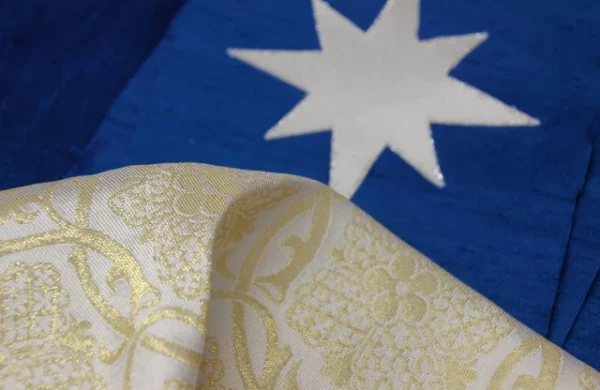
Silver Stars for Advent Stole
Advent stoles. Using cloth of silver, this star shape will be cut and appliqued to the stole, and outlined with a soft metallic gold thread.
In religious ceremonies, liturgical stoles hold key importance, and at Ecclesiastical Sewing. we consistently create quality liturgical stoles that are not only authentic but also comfortable to wear. We carefully design our stoles, selecting fabric and stitching with precision to ensure each piece is finely designed and sturdy. And used traditional construction methods, ensuring that we meet all liturgical guidelines.
At Ecclesiastical Sewing, we present collections of stole patterns, ranging from 3.5″ and 4.5″ wide Pastors & Priests Stole patterns to 5″ wide Clergy Stole patterns and V-Neck Priest Stole Sewing patterns. We also offer specialized patterns, such as our Deacon Stole Sewing pattern and Latin Mass Tapered Stole Maniple pattern. With numerous patterns available, we provide options to accommodate both traditional and modern styles, including colors suitable for every liturgical season.
Our commitment to quality ensures that our liturgical stoles are not only visually stunning but also comfortable to wear. Through precise stitching and attention to detail, we make stoles that are durable and will serve for years.
In conclusion, Ecclesiastical Sewing dedicates itself to authenticity, comfort, and quality in making liturgical stoles. Whether you are a pastor, priest, or another member of the clergy, we offer the perfect stole pattern for you. Explore our online store for a wide array of ecclesiastical collections to enhance your religious settings today!

Advent stoles. Using cloth of silver, this star shape will be cut and appliqued to the stole, and outlined with a soft metallic gold thread.
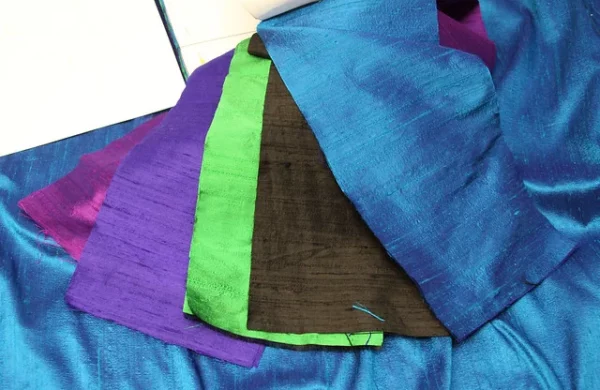
Stole Set It has been far too long since any new projects have been underway in the Ecclesiastical Sewing workroom. For tonight, we shall have a quiet peek at a… Read more Stole Set →
Update on Changes Update on Changes. Getting a new online business up and rolling has its fair share of challenges. There are samples to collect, fabrics and trims to source, patterns to draft, and sample garments to create. Throw in a few life moments like a college graduation, wedding, and a remodel, along with numerous photography sessions needed to capture images of stunning Ecclesiastical Fabrics and trims…..and yes, it does take time to pull it all together. The original plan was to launch the new online storefront in early November,… Read more Update on Changes →
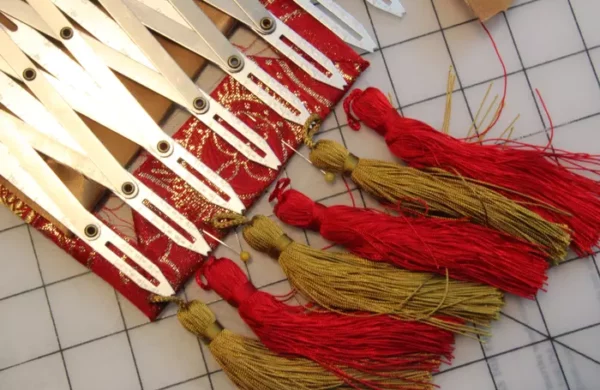
Tassels and fringe make excellent finishes for stole ends, but there are tricks for both. For tassels, use a button-hole marker to ensure even spacing. Decide on the number of tassels and the desired distance from each end, then mark and pin them in place. Tassels have a small cord or loop at the upper edge; attach it evenly. Tack the cord on the back of the stole, ensuring even hanging. In the photo, gold rayon blend tassels were initially used but later replaced with metallic gold tassels.
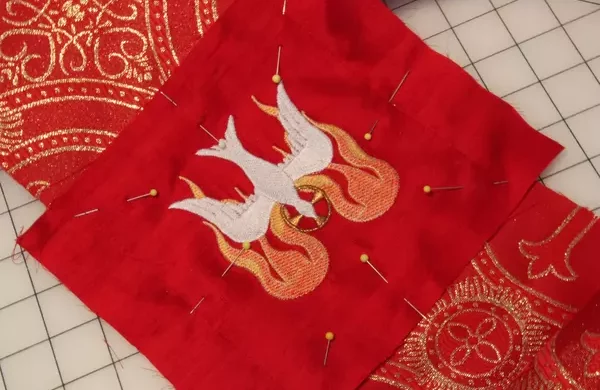
Pentecost Stoles. The first design features crossed keys symbolizing the Office of the Keys. The red silk dupioni, design with gold and bronze metallic threads, blends beautifully with red and gold brocatelle fabric and metallic galloon trim. The upper chest will showcase a descending dove with flames. and the final design will include a Bible and Sword of the Spirit, connecting to the Holy Spirit. These red Pentecost Stoles offer a reasonable budget.
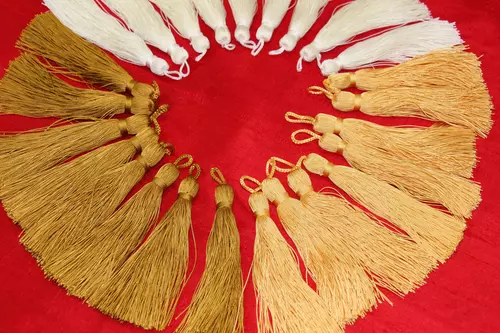
The end can have fringe on the lower edge, or the edge can have a plain hem as the finish. Creative placement of trims and orphrey bands offer other options. One of my favorite ways to finish the end of a stole is to use tassels. The tassel choices for this current stole project are a soft white or cream tassel and a gold tassel.
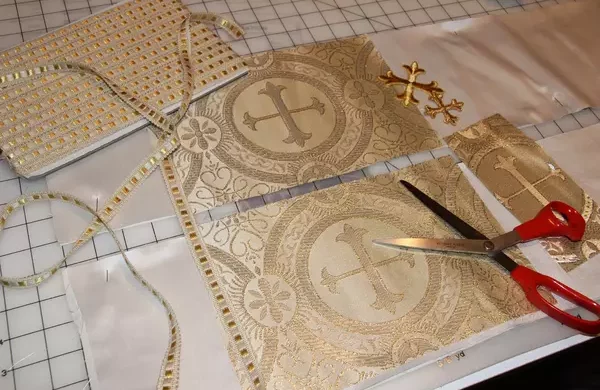
The white base fabric and fabric for orphrey trims. Finishing trim: galloon trim, braid, fringe, tassels and other trims suitable for Church vestments
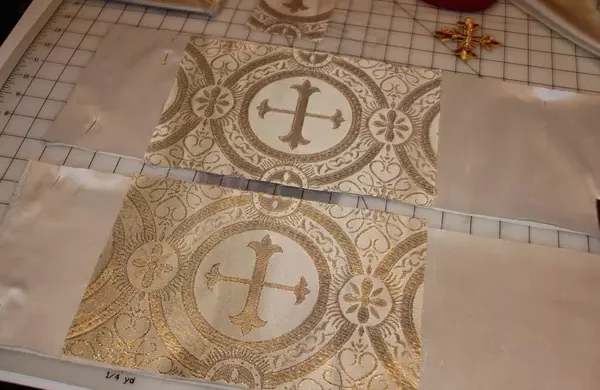
Making Priest or Pastor Stoles involves overcoming tricky parts. With Silk Shantung fabric, the challenge is its semi-transparency. To address this, underlining with unbleached muslin is presented. Orphrey size and placement are determined using the cutting table grid, following the design rule of “threes” for visual appeal. Now comes the tricky part: the lower edge of the stole. A geometry lesson and a protractor lead to marking angles and folding techniques, simplifying the process and making stole ends more enjoyable to finish.
You must be logged in to post a comment.